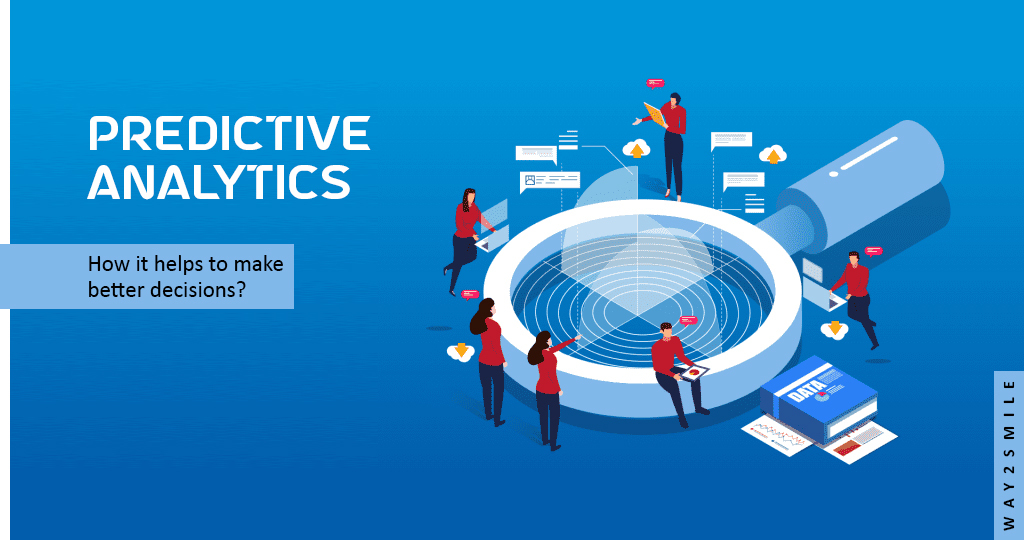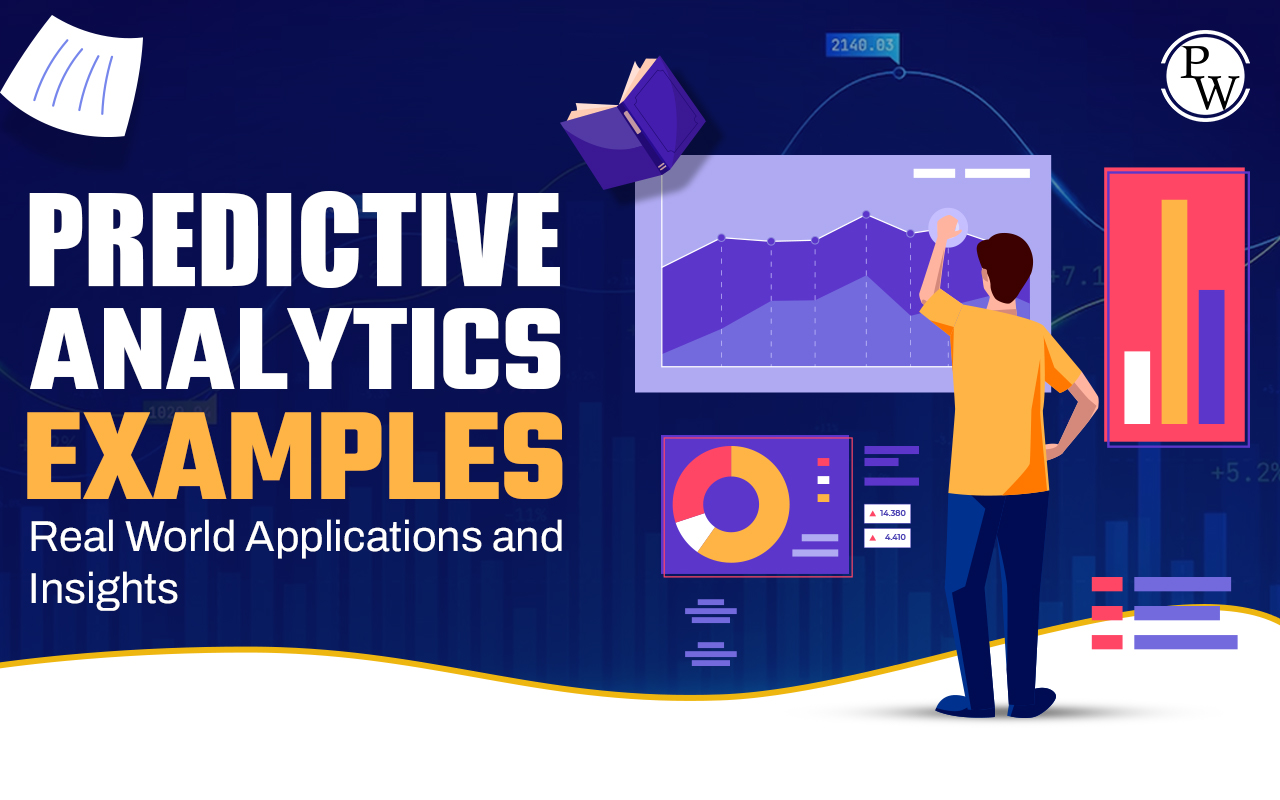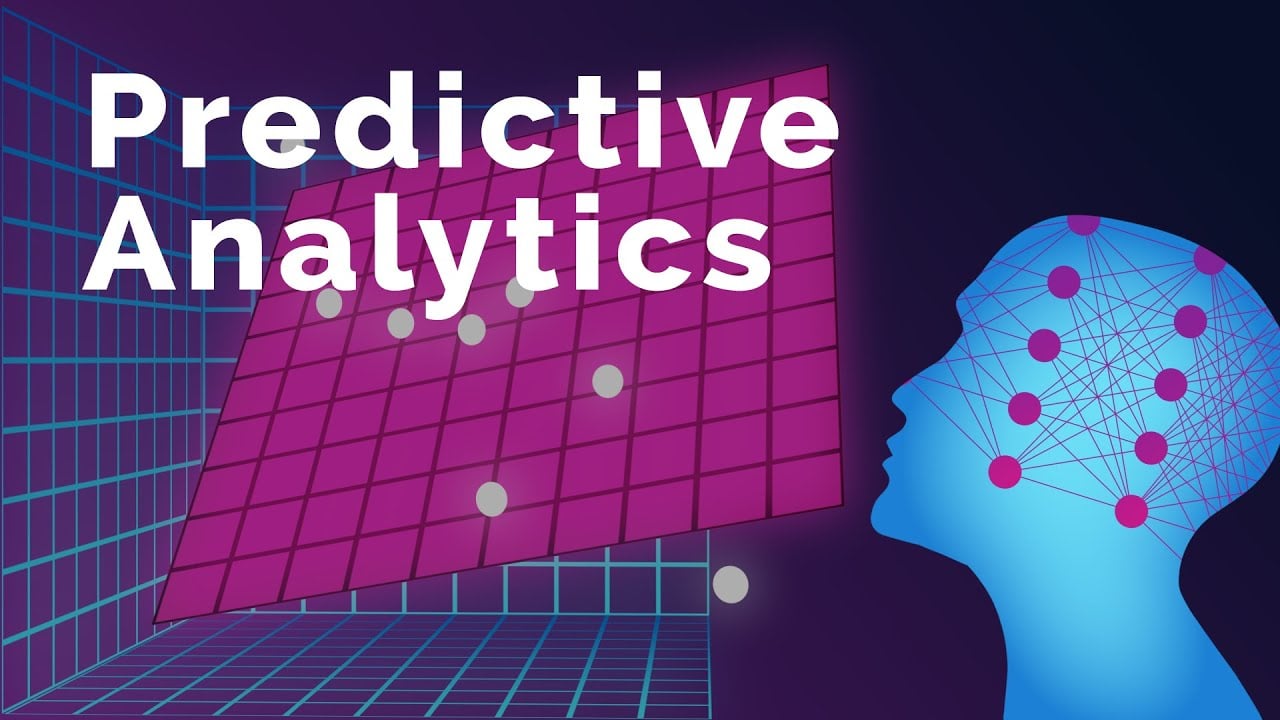Unlocking Business Potential with Predictive Analytics
Predictive analytics has emerged as a game-changer for businesses seeking to drive growth and stay ahead of the competition. By leveraging advanced statistical models and machine learning algorithms, organizations can uncover hidden patterns and trends in their data, enabling them to make informed decisions and identify new opportunities. Predictive analytics for business growth is a powerful tool that helps companies mitigate risks, optimize operations, and improve customer engagement.
At its core, predictive analytics is about using data to predict future outcomes. By analyzing historical data and identifying correlations, businesses can develop models that forecast future events, such as sales trends, customer behavior, and market shifts. This enables organizations to proactively respond to changing market conditions, rather than simply reacting to them.
The benefits of predictive analytics for business growth are numerous. For instance, companies can use predictive models to identify high-value customer segments, develop targeted marketing campaigns, and optimize pricing strategies. Predictive analytics can also help businesses reduce costs by identifying areas of inefficiency and optimizing supply chain operations.
Moreover, predictive analytics can help organizations mitigate risks by identifying potential threats and opportunities. For example, a company can use predictive models to forecast the likelihood of a natural disaster or a major economic downturn, enabling them to develop contingency plans and minimize potential losses.
As businesses continue to generate vast amounts of data, the potential for predictive analytics to drive growth and innovation is vast. By harnessing the power of predictive analytics, organizations can unlock new insights, drive business outcomes, and stay ahead of the competition in an increasingly complex and rapidly changing market.
How to Leverage Predictive Analytics for Business Success
To get started with predictive analytics, businesses need to follow a structured approach that includes data collection, model development, and deployment. The first step is to collect relevant data from various sources, such as customer interactions, sales transactions, and market trends. This data should be cleaned, transformed, and formatted to prepare it for analysis.
Next, businesses need to develop predictive models that can analyze the data and make predictions about future outcomes. This can be done using various techniques, such as regression, decision trees, and clustering. The choice of technique depends on the specific business problem and the type of data available.
Once the predictive models are developed, they need to be deployed in a production environment where they can be used to make predictions and drive business decisions. This can be done using various tools and technologies, such as data visualization software, business intelligence platforms, and cloud-based services.
To ensure successful implementation of predictive analytics, businesses need to select the right tools and techniques. This includes choosing the right data analytics software, such as R, Python, or SQL, and selecting the right machine learning algorithms, such as linear regression, logistic regression, or decision trees.
Additionally, businesses need to consider the skills and expertise required to implement predictive analytics. This includes hiring data scientists, data analysts, and business analysts who can develop and deploy predictive models. It also includes providing training and development programs to ensure that employees have the necessary skills and knowledge to work with predictive analytics.
By following these steps and considering the right tools, techniques, and skills, businesses can leverage predictive analytics to drive growth and success. Predictive analytics for business growth is a powerful tool that can help businesses make informed decisions, identify new opportunities, and mitigate risks.
The Power of Predictive Modeling in Business Decision-Making
Predictive modeling is a crucial component of predictive analytics, enabling businesses to make informed decisions and drive growth. By using various techniques such as regression, decision trees, and clustering, businesses can develop models that predict future outcomes and identify opportunities.
Regression analysis is a widely used technique in predictive modeling, which involves analyzing the relationship between a dependent variable and one or more independent variables. This technique is useful for forecasting sales, predicting customer behavior, and identifying the impact of marketing campaigns.
Decision trees are another popular technique in predictive modeling, which involves creating a tree-like model of decisions and their possible consequences. This technique is useful for identifying customer segments, predicting churn rates, and optimizing pricing strategies.
Clustering is a technique used in predictive modeling to group similar data points together, enabling businesses to identify patterns and trends. This technique is useful for segmenting customers, identifying new business opportunities, and optimizing supply chain operations.
These predictive models can be applied to real-world business problems, such as forecasting sales, identifying customer segments, and optimizing pricing strategies. For example, a retail company can use predictive modeling to forecast sales and optimize inventory levels, while a financial institution can use predictive modeling to identify high-risk customers and optimize credit scoring.
Predictive analytics for business growth is a powerful tool that can help businesses make informed decisions and drive growth. By using predictive modeling techniques, businesses can identify opportunities, mitigate risks, and optimize operations.
Moreover, predictive modeling can be used to identify new business opportunities, such as identifying new customer segments, optimizing pricing strategies, and developing new products. By using predictive analytics, businesses can stay ahead of the competition and drive growth in a rapidly changing market.
Real-World Applications of Predictive Analytics in Business
Predictive analytics has been successfully implemented by various businesses across different industries, resulting in significant benefits and growth. One notable example is Netflix’s recommendation engine, which uses predictive analytics to suggest TV shows and movies to users based on their viewing history and preferences.
Netflix’s recommendation engine is a prime example of predictive analytics for business growth, as it has helped the company increase user engagement and retention. By analyzing user behavior and preferences, Netflix can identify patterns and trends that inform its content acquisition and recommendation strategies.
Another example of predictive analytics in business is Amazon’s demand forecasting. Amazon uses predictive analytics to forecast demand for its products, enabling the company to optimize its inventory levels and supply chain operations. This has helped Amazon reduce costs and improve customer satisfaction.
Other companies, such as Walmart and Target, have also implemented predictive analytics to optimize their supply chain operations and improve customer satisfaction. By analyzing data on customer behavior, sales trends, and inventory levels, these companies can identify opportunities to improve their operations and drive growth.
The benefits of predictive analytics for business growth are clear. By analyzing data and identifying patterns and trends, businesses can make informed decisions, optimize operations, and drive growth. Whether it’s improving customer satisfaction, optimizing supply chain operations, or identifying new business opportunities, predictive analytics is a powerful tool that can help businesses achieve their goals.
Moreover, predictive analytics can be applied to various industries, including finance, healthcare, and marketing. By analyzing data and identifying patterns and trends, businesses can identify opportunities to improve their operations, reduce costs, and drive growth.
Overcoming Common Challenges in Implementing Predictive Analytics
While predictive analytics can be a powerful tool for driving business growth, its implementation can be challenging. One of the most common challenges is data quality issues, which can affect the accuracy and reliability of predictive models. To overcome this challenge, businesses need to ensure that their data is accurate, complete, and consistent.
Another challenge is the lack of expertise in predictive analytics. To overcome this challenge, businesses need to invest in training and development programs that enable their employees to develop the necessary skills and knowledge. This can include hiring data scientists and analysts who have experience in predictive analytics.
Integration with existing systems is another challenge that businesses may face when implementing predictive analytics. To overcome this challenge, businesses need to ensure that their predictive analytics solutions are compatible with their existing systems and infrastructure. This can include integrating predictive analytics with customer relationship management (CRM) systems, enterprise resource planning (ERP) systems, and other business applications.
Additionally, businesses need to ensure that their predictive analytics solutions are scalable and flexible. This can include using cloud-based solutions that can handle large volumes of data and provide real-time insights. By overcoming these challenges, businesses can ensure that their predictive analytics initiatives are successful and drive business growth.
Predictive analytics for business growth requires a strategic approach that takes into account the challenges and limitations of implementing predictive analytics. By understanding these challenges and developing strategies to overcome them, businesses can ensure that their predictive analytics initiatives are successful and drive business growth.
Moreover, businesses need to ensure that their predictive analytics solutions are aligned with their business goals and objectives. This can include using predictive analytics to identify new business opportunities, optimize operations, and improve customer satisfaction. By aligning predictive analytics with business goals, businesses can ensure that their predictive analytics initiatives are successful and drive business growth.
The Role of Machine Learning in Predictive Analytics
Machine learning is a key component of predictive analytics, enabling businesses to improve the accuracy and automation of their predictive models. By using machine learning algorithms, businesses can analyze large datasets and identify patterns and trends that may not be apparent through traditional statistical methods.
One of the main benefits of using machine learning in predictive analytics is increased accuracy. Machine learning algorithms can analyze complex datasets and identify relationships between variables that may not be apparent through traditional statistical methods. This enables businesses to make more accurate predictions and drive better decision-making.
Another benefit of using machine learning in predictive analytics is automation. Machine learning algorithms can automate many of the tasks involved in predictive analytics, such as data preprocessing, model development, and deployment. This enables businesses to focus on higher-level tasks, such as strategy and decision-making.
There are many different types of machine learning algorithms that can be used in predictive analytics, including supervised learning, unsupervised learning, and reinforcement learning. Supervised learning algorithms are trained on labeled datasets and can be used to make predictions on new, unseen data. Unsupervised learning algorithms are trained on unlabeled datasets and can be used to identify patterns and trends in the data. Reinforcement learning algorithms are trained on feedback from the environment and can be used to optimize decision-making.
Predictive analytics for business growth requires the use of machine learning algorithms to improve the accuracy and automation of predictive models. By using machine learning, businesses can make more accurate predictions, drive better decision-making, and stay ahead of the competition.
Moreover, machine learning can be used to improve the scalability and flexibility of predictive analytics solutions. By using cloud-based machine learning platforms, businesses can analyze large datasets and deploy predictive models quickly and easily. This enables businesses to respond rapidly to changing market conditions and stay ahead of the competition.
Measuring the ROI of Predictive Analytics Initiatives
Measuring the return on investment (ROI) of predictive analytics initiatives is crucial to evaluate their success and justify continued investment. There are several metrics that can be used to measure the ROI of predictive analytics initiatives, including lift, accuracy, and revenue impact.
Lift measures the increase in revenue or other desired outcomes that can be attributed to the predictive analytics initiative. For example, if a company implements a predictive analytics solution to improve customer segmentation and targeting, the lift would measure the increase in revenue generated from the targeted customers.
Accuracy measures the degree to which the predictive analytics model accurately predicts the desired outcome. For example, if a company implements a predictive analytics solution to forecast sales, the accuracy would measure the degree to which the model accurately predicts the actual sales.
Revenue impact measures the total revenue generated by the predictive analytics initiative. For example, if a company implements a predictive analytics solution to optimize pricing, the revenue impact would measure the total revenue generated from the optimized pricing strategy.
To measure the ROI of predictive analytics initiatives, businesses should establish clear goals and objectives, track key performance indicators (KPIs), and regularly evaluate the success of the initiative. By doing so, businesses can ensure that their predictive analytics initiatives are generating a positive ROI and driving business growth.
Predictive analytics for business growth requires a data-driven approach to measuring ROI. By using data and analytics to measure the success of predictive analytics initiatives, businesses can make informed decisions and drive business growth.
Moreover, measuring the ROI of predictive analytics initiatives can help businesses identify areas for improvement and optimize their predictive analytics solutions. By regularly evaluating the success of their predictive analytics initiatives, businesses can ensure that they are generating a positive ROI and driving business growth.
Future-Proofing Your Business with Predictive Analytics
Predictive analytics is a rapidly evolving field, and businesses need to stay ahead of the curve to remain competitive. To future-proof your business with predictive analytics, it’s essential to stay up-to-date with the latest trends and technologies.
One of the key trends in predictive analytics is the increasing use of machine learning and artificial intelligence. These technologies enable businesses to analyze large datasets and identify patterns and trends that may not be apparent through traditional statistical methods.
Another trend is the growing importance of data quality and governance. As businesses rely more heavily on data-driven insights, it’s essential to ensure that the data is accurate, complete, and consistent. This requires a robust data governance framework that includes data quality checks, data validation, and data security.
To stay ahead of the curve, businesses should also invest in predictive analytics talent and training. This includes hiring data scientists and analysts who have expertise in predictive analytics and machine learning, as well as providing ongoing training and development programs to ensure that employees have the necessary skills and knowledge.
Predictive analytics for business growth requires a long-term commitment to innovation and excellence. By staying ahead of the curve and investing in the latest technologies and talent, businesses can ensure that predictive analytics remains a key component of their business strategy.
Moreover, businesses should also focus on creating a culture of innovation and experimentation. This includes encouraging employees to think creatively and develop new ideas, as well as providing the necessary resources and support to bring those ideas to life.
By future-proofing your business with predictive analytics, you can drive business growth, improve decision-making, and stay ahead of the competition. Remember to stay up-to-date with the latest trends and technologies, invest in predictive analytics talent and training, and create a culture of innovation and experimentation.








